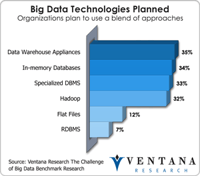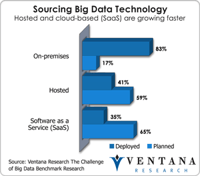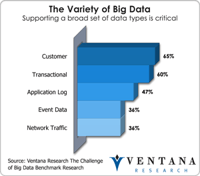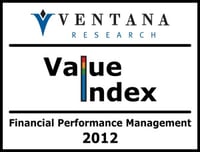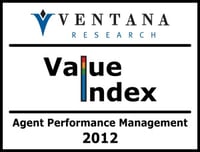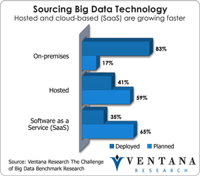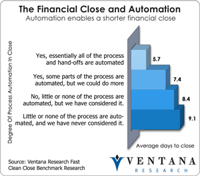A look at Enghouse Interactive’s Products page shows it is not the easiest of companies to understand. Listed are six products – companies actually – that make up the parent: Arc Solutions, CosmoCom, Datapulse, Synellect, TelRex and Trio. As yet this list doesn’t include the latest acquisition, Zeacom. All the businesses in some way connect to multichannel communications and the contact center, with products that range, respectively, from communication management systems for Cisco, a...
Read More
Topics:
Customer Analytics,
Customer Data Management,
Customer Experience,
Customer Feedback Management,
Social CRM,
Speech Analytics,
Voice of the Customer,
Enghouse interactive,
Analytics,
Cloud Computing,
Customer & Contact Center,
Customer Service,
Call Center,
Contact Center,
Contact Center Analytics,
CRM,
Desktop Analytics,
Text Analytics,
Unified Communications,
Workforce Force Optimization
MicroStrategy, announced version 9.3. The announcement came out of Amsterdam this month just in front of MicroStrategy World, the company’s annual conference for the European market. Release 9.3 delivers significant updates in four main areas: big data, advanced analytics, automated administration and visual data discovery.
Read More
Topics:
Big Data,
MicroStrategy,
Mobile,
Predictive Analytics,
Sales Performance,
IT Performance,
Operational Performance,
Visual Insight,
Business Analytics,
Business Collaboration,
Business Intelligence,
Business Performance,
Cloud Computing,
Customer & Contact Center,
Information Applications,
Operational Intelligence,
Workforce Performance,
Digital Technology
Our research agenda for 2012 in human capital management outlined the importance of workforce management for all organizations. One provider, WorkForce Software, provides systems that support scheduling, time and attendance, leave and absence and fatigue management. As I noted in my last analysis on WorkForce Software, the company’s focus on the fatigue aspect of workforce management, especially in white-collar environments such as transportation, utilities and healthcare, has provided them...
Read More
Topics:
Big Data,
Sales Performance,
SAP,
Social Media,
Supply Chain Performance,
Sustainability,
Human Capital Management,
SuccessFactors,
Business Technology Innovation,
IT Performance,
IT Research,
Operational Performance,
Business Analytics,
Business Collaboration,
Business Intelligence,
Business Mobility,
Business Performance,
Cloud Computing,
Customer & Contact Center,
Financial Performance,
Governance, Risk & Compliance (GRC),
Information Applications,
Information Management,
Location Intelligence,
Operational Intelligence,
Workforce Performance,
HTML5,
Time & Attendance,
Workforce Management
VPI, a well established vendor in the workforce optimization (WFO) space, was recently rated as a Hot vendor in the Ventana Research Agent Performance Management 2012 Value Index, which extends the traditional definition of WFO to include multichannel interaction capture, agent-related analytics, and agent compensation management. VPI’s Hot rating is a tribute to the functionality and architecture of its suite, even though it doesn’t include a WFM product (instead, workforce management is...
Read More
Topics:
Customer Analytics,
Customer Experience,
Speech Analytics,
Voice of the Customer,
VPI,
Knowlagent,
Nexxphase,
Analytics,
Business Analytics,
Cloud Computing,
Customer & Contact Center,
Customer Service,
Call Center,
Contact Center,
Contact Center Analytics,
CRM,
Desktop Analytics,
Text Analytics,
Pipkins,
Workforce Force Optimization
Usually, just figuring out how to start the process of change is a major barrier to improvement in business. I think that’s especially true when it comes to integrated business planning (IBP). I started using that term six years ago to differentiate that process from financial budgeting and the many other forward-looking activities used in companies. IBP applies to a longstanding objective: bringing together the disparate strands of forward-looking activities across a corporation to foster...
Read More
Topics:
Big Data,
Planning,
Sales Performance,
Supply Chain Performance,
Office of Finance,
Reporting,
Budgeting,
driver-based,
Operational Performance,
Business Collaboration,
Business Performance,
Customer & Contact Center,
Financial Performance,
Workforce Performance,
Financial Performance Management,
Integrated Business Planning
On the heels of the release of his new book, The Mobile Wave, Microstrategy’s CEO Michael Saylor delivered an interesting keynote at Microstrategy World in Amsterdam this past week. Unlike other keynotes we’ve seen at various supplier conferences, the presentation was not a sales pitch. There was no reference to the fact that the company was simultaneously launching MicroStrategy 9.3, a major new release of its flagship offer. The presentation focused almost entirely on the rise of mobile...
Read More
Topics:
Microsoft,
MicroStrategy,
Mobile,
Sales Performance,
Google,
IT Performance,
Business Analytics,
Business Collaboration,
Business Intelligence,
Business Performance,
Cloud Computing,
Customer & Contact Center,
Information Applications,
Nexus 7,
Surface,
Digital Technology
Knowlagent has carved out a unique position in the agent performance management market. Everyone involved in running a contact center knows how difficult it is to manage agent time so that agents are available within service level agreement specifications to answer inbound customer calls, have sufficient time to carry out other essential tasks such as breaks, training, coaching and making outbound calls, but not burn themselves out. Our research into agent performance management shows that many...
Read More
Topics:
Customer Analytics,
Customer Experience,
Voice of the Customer,
Knowlagent,
Analytics,
Customer & Contact Center,
Customer Service,
Call Center,
Contact Center,
Contact Center Analytics,
CRM,
Workforce Force Optimization
This month Kana announced it had acquired contact center provider Ciboodle. This comes a few years after Ciboodle was acquired by Sword, a marriage that apparently didn’t work out because Sword, a predominantly services company, didn’t make the necessary investment in the Ciboodle products to keep them competitive. Kana, looking to expand its portfolio beyond service experience management, spotted that Ciboodle, with its customer experience management portfolio, provided a good, complimentary...
Read More
Topics:
Social Media,
Customer Analytics,
Customer Experience,
Social CRM,
Speech Analytics,
Voice of the Customer,
Kana,
Analytics,
Business Analytics,
Cloud Computing,
Customer & Contact Center,
Customer Service,
Call Center,
Contact Center,
Contact Center Analytics,
CRM,
Desktop Analytics,
Text Analytics
Actuate, the driving force behind the open source Eclipse Business Intelligence and Reporting Tools (BIRT) project, is positioning itself in the center of the big-data world through multiple partnerships with companies such as Cloudera, Hortonworks, KXEN, Pervasive and a number of OEMs. These agreements, following on its acquisition of Xenos a couple of years ago, help Actuate address some big issues in big data, involving enterprise integration and closed-loop operational systems that provide...
Read More
Topics:
Big Data,
Pervasive,
Eclipse,
IT Performance,
Operational Performance,
Analytics,
Business Analytics,
Business Collaboration,
Business Intelligence,
Business Performance,
Cloud Computing,
Cloudera,
Customer & Contact Center,
Information Applications,
Information Management,
Operational Intelligence,
Strata+Hadoop
We have just released our 2012 Value Index for Sales Performance Management (SPM), in which we evaluate the competency and maturity of vendors and products. Our firm has beenresearching this software category for many years, and our latest benchmark research in sales performance management found many areas for improvement among sales applications in a field where many sales organizations still use outdated or insufficient applications to manage revenue generation and customer relationships.
Read More
Topics:
Microsoft,
Sales,
Sales Performance,
Salesforce.com,
SAP,
NICE Systems,
Operational Performance,
Business Analytics,
Business Collaboration,
Business Performance,
Cloud Computing,
Financial Performance,
Oracle,
CallidusCloud,
Sales Performance Management,
Synygy,
Varicent,
Xactly
Planning portfolio risk follows the same basic tenets as other sorts of business planning. It must be done in the context of a time dimension. In business, short-term plans are developed with a lot of givens or constraints. For example, capacities are fixed, because it’s impossible to wave a magic wand and bring a new factory on line, stuff more machine tools into already jammed facilities or source more raw materials in a capacity-limited supply chain. Short-term plans also incorporate...
Read More
Topics:
Sales Performance,
GRC,
Office of Finance,
Operational Performance,
Analytics,
Business Analytics,
Business Performance,
Financial Performance,
Governance, Risk & Compliance (GRC),
Information Management,
Business Planning,
Risk
As volumes of data grow in organizations, so do the number of deployments of Hadoop, and as Hadoop becomes widespread, more organizations demand data analysis, ease of use and visualization of large data sets. In our benchmark research on Hadoop, 88 percent of organizations said analyzing Hadoop data is important, and in our research on business analytics 89 percent said it is important to make it simpler to provide analytics and metrics to all users who need them. As my colleague Mark Smith...
Read More
Topics:
Big Data,
Datameer,
MapR,
Operational Performance,
Business Analytics,
Business Intelligence,
Business Performance,
Cloudera,
Customer & Contact Center,
Hortonworks,
IBM,
Information Applications,
Operational Intelligence,
Visualization,
Data Discovery,
Strata+Hadoop
My research into customer experience management shows that companies are increasingly aware that the customer experience has a profound impact on business success. In almost equal numbers, participants said it determines the loyalty of customers (21%), the propensity of customers to recommend the company to others (21%), the amount of additional purchases they make (19%) and their general level of satisfaction (19%). Furthermore, companies also realize that good experiences save money, because...
Read More
Topics:
Predictive Analytics,
Customer Analytics,
Customer Data Management,
Customer Experience,
Customer Feedback Management,
Social CRM,
Speech Analytics,
Voice of the Customer,
Analytics,
Cloud Computing,
Customer & Contact Center,
Customer Service,
Call Center,
Contact Center,
Contact Center Analytics,
CRM,
Desktop Analytics,
Text Analytics,
Unified Communications,
Vendor(s),
Workforce Force Optimization
We recently issued our 2012 Value Index on Financial Performance Management (FPM). Ventana Research defines FPM as the process of addressing the often overlapping people, process, information and technology issues that affect how well finance organizations operate and support the activities of the rest of their organization. FPM deals with the full cycle of finance department activities, which includes planning and budgeting, analysis, assessment and review, closing and consolidation, internal...
Read More
Topics:
Mobile,
Planning,
Predictive Analytics,
Office of Finance,
Budgeting,
closing,
Consolidation,
contingency planning,
Analytics,
Business Analytics,
Business Performance,
Financial Performance,
CFO,
Value Index,
Financial Performance Management
Our benchmark research into agent performance management shows that the majority of companies are not very mature in their use of people, processes, information and technology in handling customer interactions. Companies are most mature is their use of information, but even in this area they are hampered by their failure to use the latest technologies available to support their efforts.
Read More
Topics:
Predictive Analytics,
Sales Performance,
Social Media,
Customer Analytics,
NICE Systems,
Speech Analytics,
Voice of the Customer,
VPI,
Call Copy,
Enkata,
Envision,
Genesys,
KnopahSoft,
LiveOps,
Operational Performance,
Analytics,
Business Analytics,
Business Performance,
Cloud Computing,
Customer & Contact Center,
Workforce Performance,
Call Center,
coaching,
Compensation,
Contact Center,
Contact Center Analytics,
Desktop Analytics,
Text Analytics,
OnviSource,
Training,
Verint,
Workforce Force Optimization
CODA’s Financials has a specific target market, from companies in the upper half of the midsize range to the lower end of the large range (that is, companies with 500 to 2,500 employees) in services (not manufacturing) businesses. CODA, the company, started in the 1990s and differentiated itself by designing ERP and accounting software to run on a multidimensional database rather than the more common relational databases of the day. This has proven to be an elegant approach, because businesses...
Read More
Topics:
Sales Performance,
ERP,
Office of Finance,
CODA,
Operational Performance,
Analytics,
Business Analytics,
Business Performance,
Cloud Computing,
Customer & Contact Center,
Financial Performance,
CFO,
FinancialForce,
financials
I’ve written frequently on issues that confront desktop spreadsheet users, such as business modeling and capital investment, as well as the risk and control issues spreadsheets pose and their contribution to paralysis by analysis. I focus mainly on the technology aspects of organizational challenges, and I usually recommend replacing stand-alone desktop spreadsheets with more appropriate tools. Yet there are many instances where spreadsheets work well, and in other cases people continue to use...
Read More
Topics:
GRC,
Office of Finance,
Operational Performance,
Business Analytics,
Business Intelligence,
Business Performance,
Financial Performance,
Governance, Risk & Compliance (GRC),
CFO,
finance,
Training
One of the most important trends in business over the past 20 years has been the broadening use of information technology to manage and support activities. In the early decades of business computing, companies developed islands of automation for largely numeric functions such as billing, inventory management and accounting. Each ran on a proprietary system and engaged the time of a relative handful of employees. Today, just about everyone works with an IT system for at least some of their...
Read More
Topics:
Big Data,
Performance Management,
Predictive Analytics,
Customer Experience,
Governance,
GRC,
Management,
IT Performance,
Operational Performance,
Analytics,
Business Intelligence,
Business Performance,
Financial Performance,
Governance, Risk & Compliance (GRC),
compliance,
finance,
Risk,
financial risk management,
IT Risk Management
It’s clear that certain customers generate more profits than others, just as some products offer greater economic returns than others, as I’ve noted before. For this reason, efforts to improve customer profitability are not a new trend. Good managers have always looked for ways to achieve the highest sustainable margins. However, at some point, almost all businesses realize that increasing sustainable profitability can’t be achieved simply through increasing revenue or cutting costs. Those...
Read More
Topics:
Sales Performance,
Office of Finance,
Operational Performance,
Analytics,
Business Analytics,
Business Intelligence,
Business Performance,
Customer & Contact Center,
Financial Performance,
Information Applications,
CRM,
Financial Performance Management,
Profitability
Callminer is best known as a vendor of speech analytics software. Along with its own suite, its products also are embedded in those of several other vendors to provide speech analysis. During a recent briefing, I learned that the company has not only expanded into text and social analytics but also that its latest release includes more features and a friendlier user interface, two requirements that my research shows are essential in persuading companies to more widely adopt analytics for...
Read More
Topics:
Social Media,
Customer Analytics,
Customer Experience,
Social CRM,
Speech Analytics,
Voice of the Customer,
Callminer,
Analytics,
Business Analytics,
Business Collaboration,
Business Intelligence,
Cloud Computing,
Customer & Contact Center,
Customer Service,
Call Center,
Contact Center,
Contact Center Analytics,
CRM,
Text Analytics
Kognitio has been serving the analytics and data needs of organizations for more than 20 years with an in-memory analytics platform that meets many of the big-data needs of today’s organizations. Kognitio Analytical Platform provides a unique massively parallel processing (MPP) in-memory database that can rapidly load data and calculate analytics; it is available both in an analytical software appliance and via cloud computing.
Read More
Topics:
Big Data,
Data Warehousing,
Social Media,
alteryx,
IT Performance,
Operational Performance,
Analytics,
Business Analytics,
Business Intelligence,
Business Performance,
Cloud Computing,
Customer & Contact Center,
Hortonworks,
Information Management,
Kognitio,
Strata+Hadoop
The demand for business information on mobile devices such as smartphones and tablets continues to increase, while the technology to support it has not. In our benchmark research on information applications, only 11 percent of organizations said they are very satisfied with their ability to provide such information, and their top two complaints with existing technologies are that they are too slow and not adaptable or flexible. The unique aspects of mobile technology, from the small screen size...
Read More
Topics:
Mobile,
Sales Performance,
Supply Chain Performance,
Operational Performance,
Analytics,
Business Analytics,
Business Intelligence,
Business Performance,
CIO,
Cloud Computing,
Customer & Contact Center,
Financial Performance,
Governance, Risk & Compliance (GRC),
Information Applications,
Information Management,
Location Intelligence,
Workforce Performance,
Digital Publishing,
Roambi,
Digital Technology
Many companies have legacy systems in their contact centers, especially systems to manage telephony. My research into the use of technology in centers shows they can create headaches for center managers whose budgets don’t allow them to invest in new systems to match emerging business requirements and changes in consumer behaviors. My research into customer relationship maturity shows that consumers now want to interact with companies through multiple communication channels, with social media...
Read More
Topics:
Social Media,
Customer Experience,
Social CRM,
Cloud Computing,
Customer & Contact Center,
Customer Service,
Call Center,
Contact Center,
CRM
What’s a fast, free and reasonably reliable way of gauging the effectiveness of a finance department’s management? It’s the number of days it takes it to close the books. Companies that take six days or fewer after the end of the period to close their monthly, quarterly or semiannual accounts demonstrate a basic level of effectiveness that those that take longer do not. In my judgment, finance executives should regard a slow close as a negative key performance indicator pointing to...
Read More
Topics:
Sales Performance,
Office of Finance,
close,
Consolidation,
Controller,
XBRL,
Business Analytics,
Business Intelligence,
Business Performance,
Financial Performance,
Governance, Risk & Compliance (GRC),
CFO,
Data,
Document Management,
Financial Performance Management
